Among the fisherman's nets with the cod and herring and jagged barnacles - and if BBC4 crime dramas are to be believed, then a severed head too - are hundreds if not thousands of blue mussels.
The mussel is a regular commodity in the Northern waters, clinging to seabeds and to the roots of bridges and pier structures; eventually ending their days entangled in the fisherman's catch. They are the neglected cousin of the oyster and the common familiar of the mollusc family. Here, in Copenhagen, they are known as 'blue gold' or, due to their simplicity and high abundance, the 'potato of the sea'.
Perhaps then, because of their high return, this is why they have largely gone unnoticed in Scandinavia's restaurant renaissance. Few chefs embrace the blue mussel despite it being readily available. This is especially so in the winter months, when the land across the top-slice of Europe is otherwise barren and bereft of produce, and attention turns to the waters.
A group of local chefs have joined forces for Wonderful Copenhagen and a "Gastro Cruise" in which each has put their stamp on the humble mussel. The Cruise is a celebration of local gastronomy and invites visitors to board a boat in the capital's harbour and visit different restaurants, each showcasing an ingredient throughout February weekends. On my visit, it was the blue mussel.
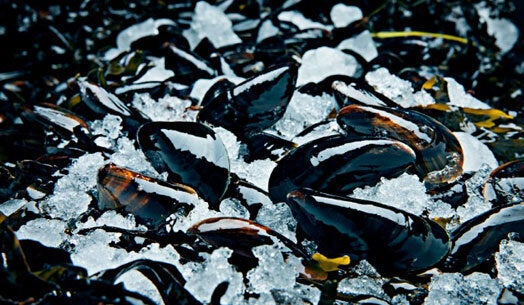
With Scandinavia boasting some of the best cuisine in the world, exercising the idea of localism and a respect of heritage; foraging and demonstrating new boundaries when it comes to the elegant pairing of ingredients, I wondered how exactly the chefs could stretch the capabilities of the mussel. Each would have to show knowledge of the small-shell mollusc and deliver their own repertoire from in-season ingredients and a careful assortment of bivalvian pairings. It is because of such application, and the use of minimal, ingredient-led pairings, that this food from the North is held in such high acclaim - and Noma widely considered the best restaurant in the world, as well as Chef Rasmus Kofoed voted best chef in the world last year by Bocuse D'Or. We all want what Scandinavia are having.
I meet the boat crew at the Black Diamond on the banks of the harbour in Slotsholmen. The building houses the Royal Library collection as well as being used as the library to the University of Copenhagen. Designed by Danish architects schmidt hammer lassen in 1999, it is the largest library in the Nordic countries, and it's from here we depart.
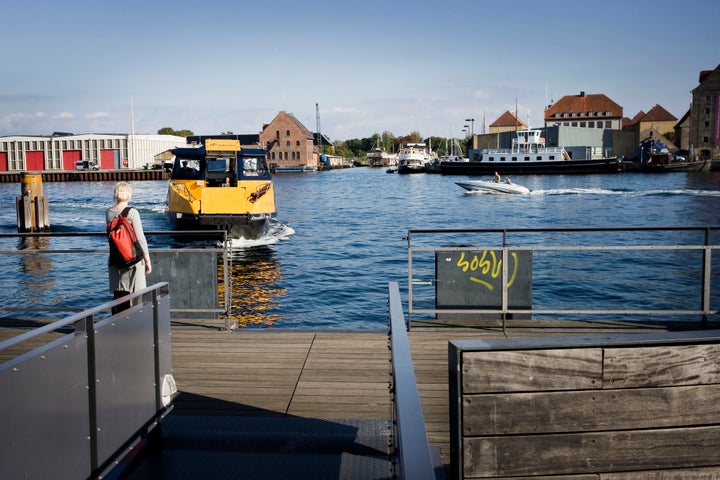
Waiting on board the boat are blue mussels in a pea-green purée served with small, hand-cut "French fries" from the Black Diamond's restaurant Søren K. I don't know how long they've been waiting for me to arrive, but the chips are limp and depressing and the mussels have dried in the minus-temperature. It's not a promising start but we soon arrive at Bojesen restaurant in the Opera House for the second serving in this mussel adventure.
A narrow gangway is latched to the boat and I exit across and up the steps to the Opera House as the wind whips off the water. Bojesen is located at the front of house and the chef appears to present his dish of deep-fried mussels. Each is a small and crunchy morsel - removed from its shell - able to hold the flavour of the sea while maintaining the heated crispness of the deep-fried breadcrumb casing. Curls of sweetened onions completed the dish.
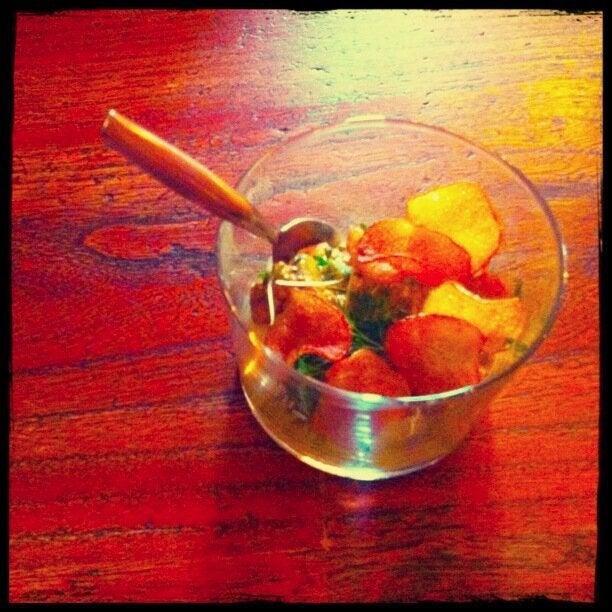
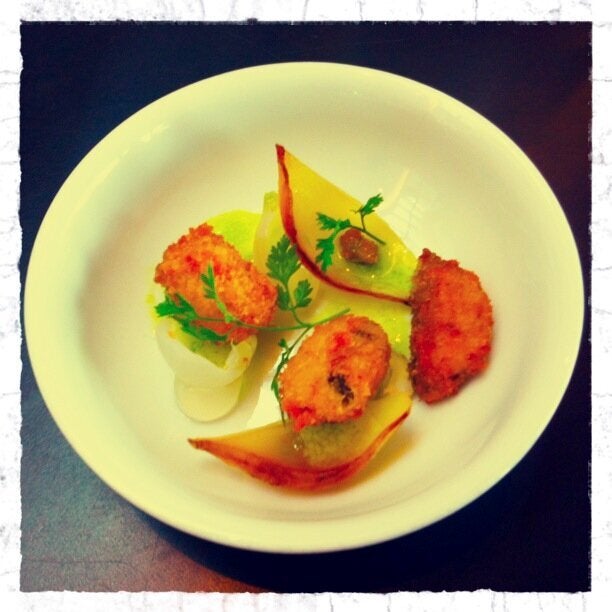
From here we travelled along the canal to M/S Amerika on Dampfærgevej. Situated on the quayside close to the DFDS Seaways terminal, the restaurant is housed within a high-ceilinged, industrial space. I imagine this once being a lace factory or workman's space for the production of soap or door hinges, or something useful. The mussels are presented in a glass tumbler, with a mayonnaise dressing and small crisps on top for added crunch against the soft, sometimes chewy, mussels. It looks pretty in design and the mussels are plump and warm, but the tangy mayonnaise is the over-riding flavour and any taste of the sea is lost.
The most simple recipe, but also one of the best, was from the Midtown Grill at the Marriott Hotel. A handful of mussels were steamed inside a pouch of grease-proof paper along with tomatoes, onions, leeks, olive oil and a splash of Chardonnay. Unwrapped, the bundle releases the aroma and juices from the assemblage of ingredients, all absorbed by a thick-wedge of soda bread.
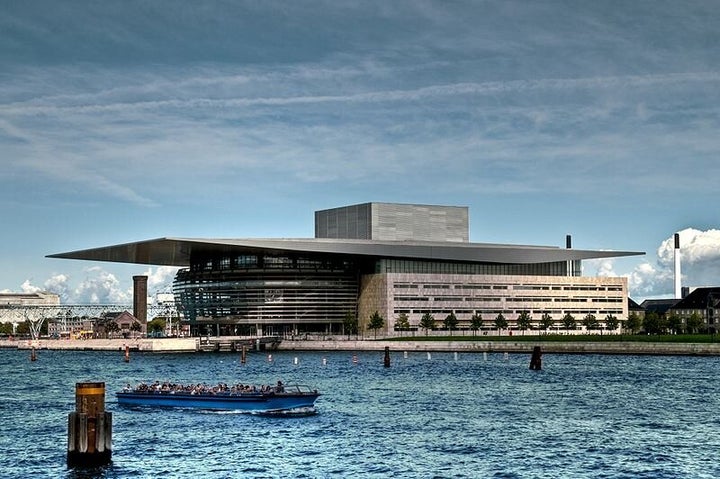
Lumskebugten Restaurant is translated as "Treacherous Bay", just off the quayside at Lion Port on Esplanaden. The restaurant is a charming collection of rooms within a much larger building housing maritime memorabilia and curios, as well as an entire wall dedicated to a bookcase of known and foreign cookery books. I pick out Noma: Time and Place in Nordic Cuisine, obviously, with a personalised note on the front-sleeve from René to chef Erwin Lauterbach; as well as other culinary doctrine from equally applauded masters: White Heat by Marco Pierre White, Les Halles Cookbook by Anthony Bourdain and Nose to Tail Eating by Fergus Henderson.
The restaurant dates back to 1854 when, a now-legendary, matriarch named Karen Marguerita Krog established it as a tavern for sailors. As the tavern's reputation grew, aristocrats, artists, and members of the Danish royal family came to dine. From the beginning of the 1900s, Lumskebugten was the talk of Copenhagen with French frog's legs regularly flown in and Russian Czar Nikolai II dropping in during royal visits.
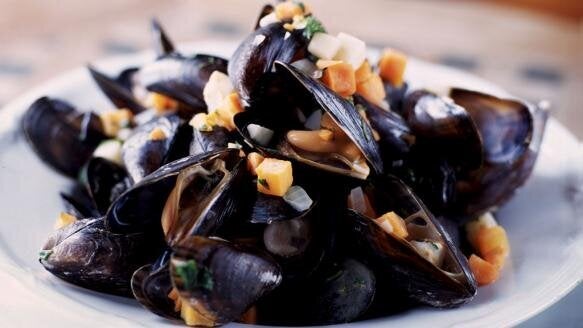
Chef Lauterbach's planned usage for the mussel was a mussel pie. A big, puffy casing of pastry cocooning warm mussels, finely diced carrots, leeks and mushrooms. There was something British about the serving, something rustic and rewarding: a straightforward crisp, pastry dome, like a snack you'd pick-up from a football game. But this was nothing like those saggy atrocities. This had style. This had a Danish design to it: fresh, steaming, soft, auburn-coloured pastry flaked when pierced with a fork, and the inside revealed the balance of hand-chopped vegetables and 'potatoes of the sea'.
Finally the boat rests at Restaurant Viva, near the Islands Brugge Harbour Park. The boat-restaurant seats around 75 inside and a further 50 on the deck. The furniture can be described as 'modern-Danish'; it's plastic and bendy and most probably trendy, but not all that comfortable. Chefs Charles Teinby and Jesper Myrup are both influenced heavily by Nordic cuisine and welcome this challenge of showcasing the blue mussel. It presents an opportunity to brag local elements while promoting the restaurant and the kitchen's talent.
A mussel and shrimp risotto arrives in a duck-egg-blue bowl. There are a few dried mushrooms mixed with a couple of singed white florets of baby cauliflower, some ramson and other green, curly garnishes. It's another example of tasty mussel-usage and a perfect advertisement for local ingredients. While almost every chef tries to lean on another country's heritage for flair and creativity; calling it "French-inspired", using "Italian ingredients" or the dazed and dopey phrasing of "fusion food", these chefs are working as a collective and tightening the reins when it comes to their sourcing, looking around the corner, over the hill or in the waters for their inspiration.
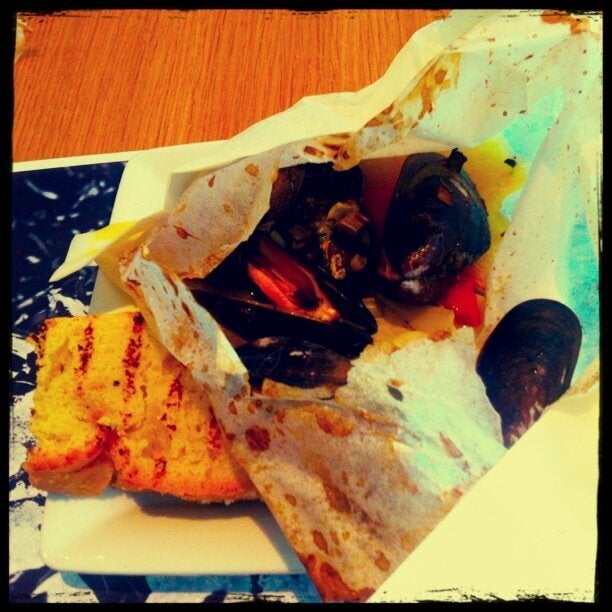
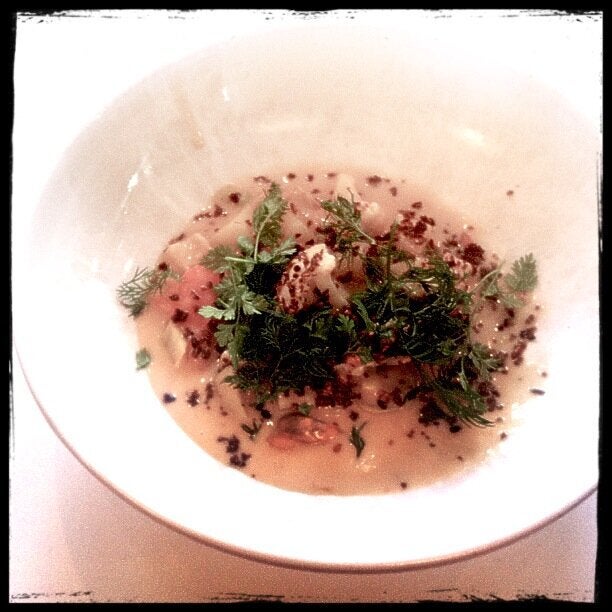
Copenhagen is teaching the world many things about food, while remaining rooted in the basics and following the road of simplicity. With their appreciation of localism and clever ingredient application, chefs appreciate - with a craftsmanship flair - that some of the most delicious and affordable ingredients are already well within our reach.
Visit Copenhagen website
Photographs supplied by Visit Denmark and Copenhagen Media Center. Photographer of photo #2: Ty Stange